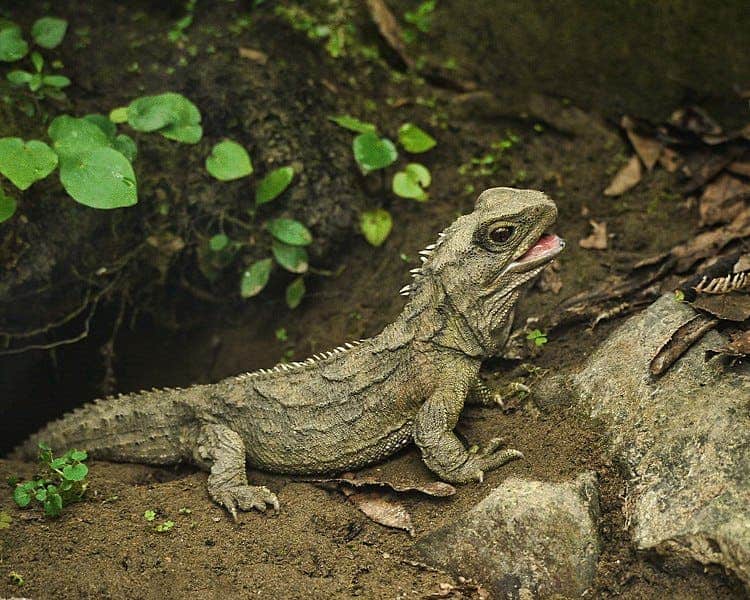Thousands of species of reptiles are at risk of extinction all around the world. According to a new study, 21% of all reptile species are either vulnerable, endangered, or critically endangered. Crocodiles and turtles are at the greatest risk of extinction, with 57.9% and 50.0% of species being endangered respectively.

The fact that human activity is driving species extinct isn’t exactly a new thing, and things are going from bad to worse in many different parts of the world. Having a good understanding of the severity of the situation is a first step to focusing conservation efforts where they are most needed.
With this in mind, a team of researchers set out to assess just how bad the situation is for reptiles. While assessments have been made for birds, mammals, and amphibians, they’ve been lacking for reptiles. In total, the researchers analyzed 10,196 species from 24 countries across six continents, finding that around 1 in 5 species are threatened with extinction. The survey included 24 countries across six continents. The study found that 30% of forest-dwelling reptiles are at risk of extinction, compared with 14% of reptiles in arid habitats.
“The most important finding is that over 21% of reptiles worldwide, more than 1,800 species, are threatened with extinction,” says Bruce E. Young, Chief Zoologist and Senior Conservation Scientist at NatureServe, a non-profit organization, and co-author of the study, to ZME Science.
If this doesn’t sound alarming, well, it should. The current rate of extinction of species is estimated at 100 to 1,000 times higher than natural background extinction rates, and the main culprit for that is human activity. We’re causing species to go extinct at a rate comparable to the great extinctions throughout human history, and reptiles are not spared from any of this.
“The potential loss of one fifth of all reptile species reminds us how much of Earth’s biodiversity is disappearing, a crisis that is threatening all species, including humans,” said Maureen Kearney, a program director at the U.S National Science Foundation, which funded much of the study research conducted in Latin America and the Caribbean. “It is critical we understand extinction risk data for all species if society is to develop strategic, effective conservation efforts, and this study fills a gap in that understanding.”
This study comprised a large, international, and diverse team, and Kearney says that only through this type of international effort (which often includes underappreciated “boots on the ground” work) can we properly understand the challenges biodiversity is facing.
The researchers also mapped the areas with the highest concentration of extinct species — oftentimes, forested areas. This not only indicates the areas where conservation action is most important, but also indicates what types of conservation efforts would be most helpful.
“The greatest concentrations of threatened reptiles are in SE Asia, western Africa, northern Madagascar, the northern Andes, & the Caribbean. The single most effective conservation effort would be to prevent forest destruction and restore degraded forests in these places,” Young adds.

In fact, it was surprising that the biggest threats to reptiles were also the biggest threats to other animals — especially birds, mammals, and amphibians. Yet again, this highlights the best avenues for conservation, because it suggests that measures that help reptiles will also help other biodiversity (and vice-versa).
“The biggest surprise is the commonality of the threats to the terrestrial vertebrates (birds, mammals, reptiles, amphibians). Agriculture, logging, invasive species are major threats to all four groups. That means that reducing any of these threats will help lessen the threat of extinction for species in all four groups,” Young adds in an email.
“This is good news because the extensive efforts to protect better known animals have also likely contributed to protecting many reptiles. Habitat protection is essential to buffer reptiles, as well as other vertebrates, from threats such as agricultural activities and urban development.”
However, reptiles are a diverse group, and efforts to help them will need to also be diverse — and they need to be ramped up quickly, the researchers urge, before irreversible damage starts cascading through ecosystems.

Otago Skink (Oligosoma otagense), IUCN Red List Status: Endangered; King Cobra (Ophiophagus hannah), IUCN Red List Status:
Vulnerable. Image credits: NatureServe / IUCN.
Young, who’s been based in Costa Rica since the 1980s, recalls how a reptile species used to thrive in the country’s forests when he arrived. But deforestation for agriculture has brought the species to the brink of extinction.
“I’ve been based in Costa Rica since the 1980s. A snake called the Black-headed Bushmaster (Lachesis melanocephala), which feeds on small forest mammals such as rats, was widespread in the lowland rainforests along the Pacific slope of the country when I arrived. Widespread deforestation, including the conversion of forests to oil palm plantations and other forms of agriculture, has fragmented the habitat to the extent that the species is now restricted to a few large tracts of forest and categorized as Vulnerable to extinction in our analysis.”
Although the challenges reptiles are facing are global, we can also play a role and help them. Specifically for reptiles, the easiest thing to do, says Young, is to resist the temptation to keep reptiles as pets. Oftentimes, these animals are taken from the wild. But most importantly, we should take measures to reduce global trade that drives the forest loss that harms reptiles (as well as mammals, birds, amphibians, and other creatures).
The study “A global reptile assessment highlights shared conservation needs of tetrapods” was published in Nature.






